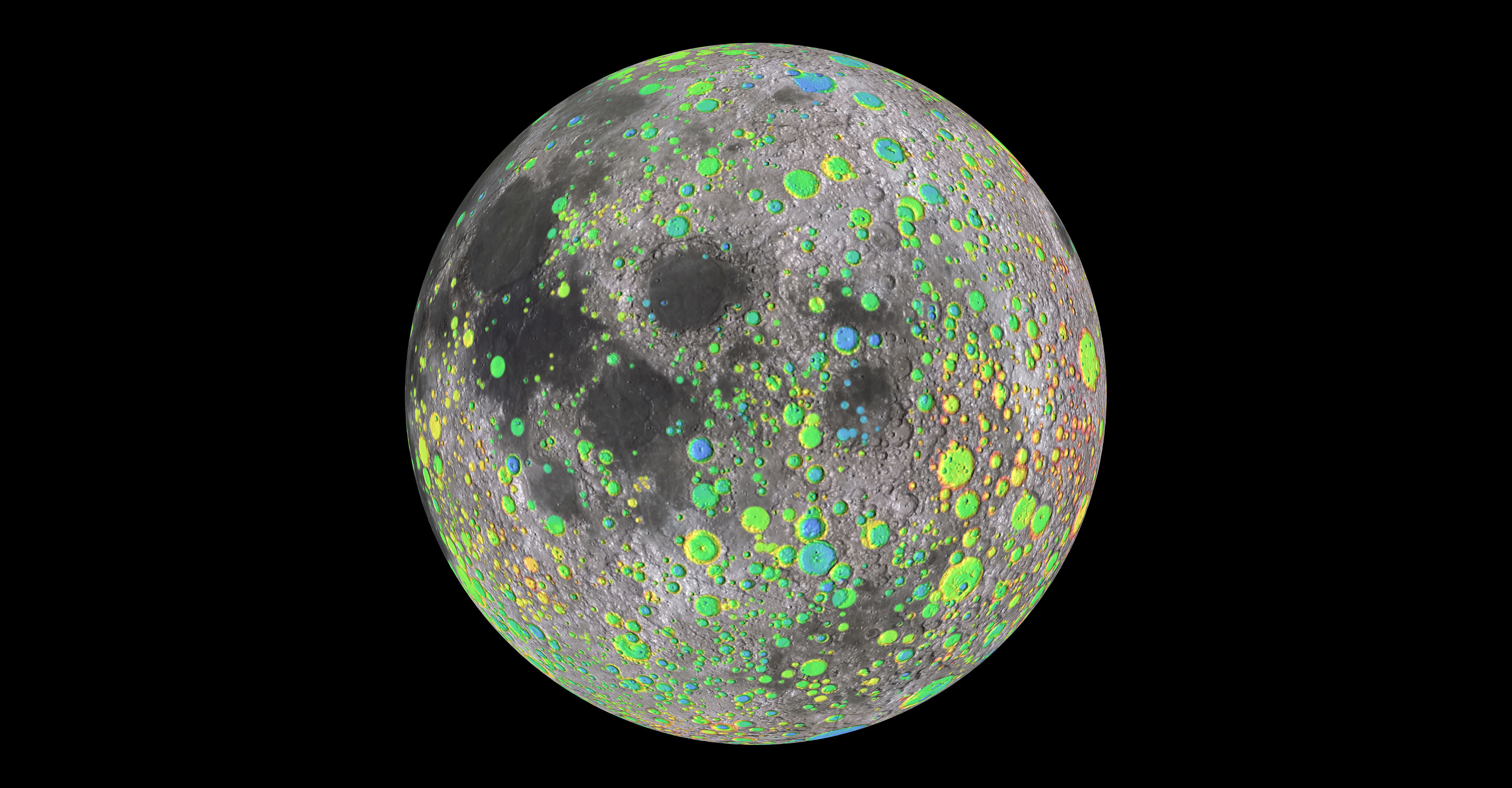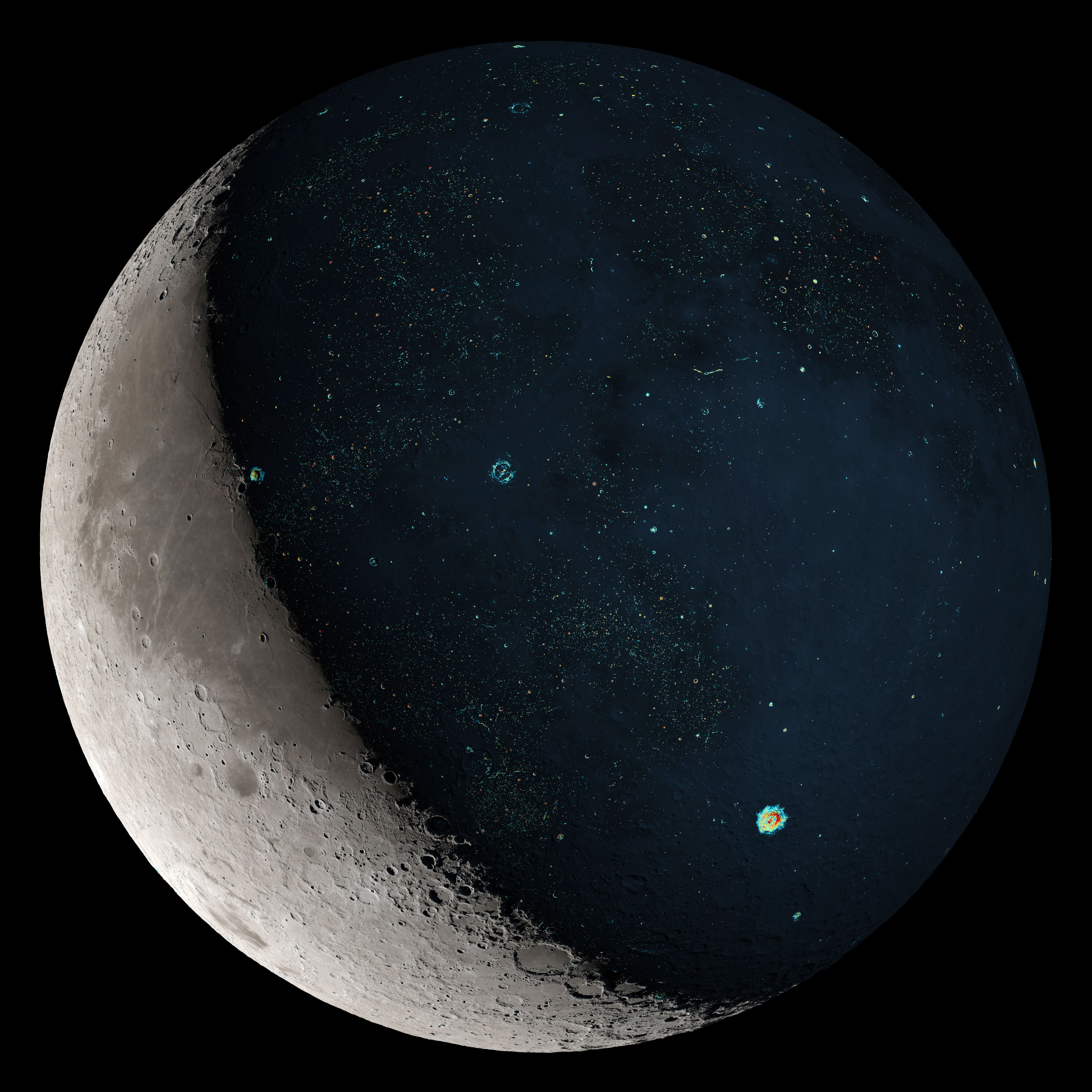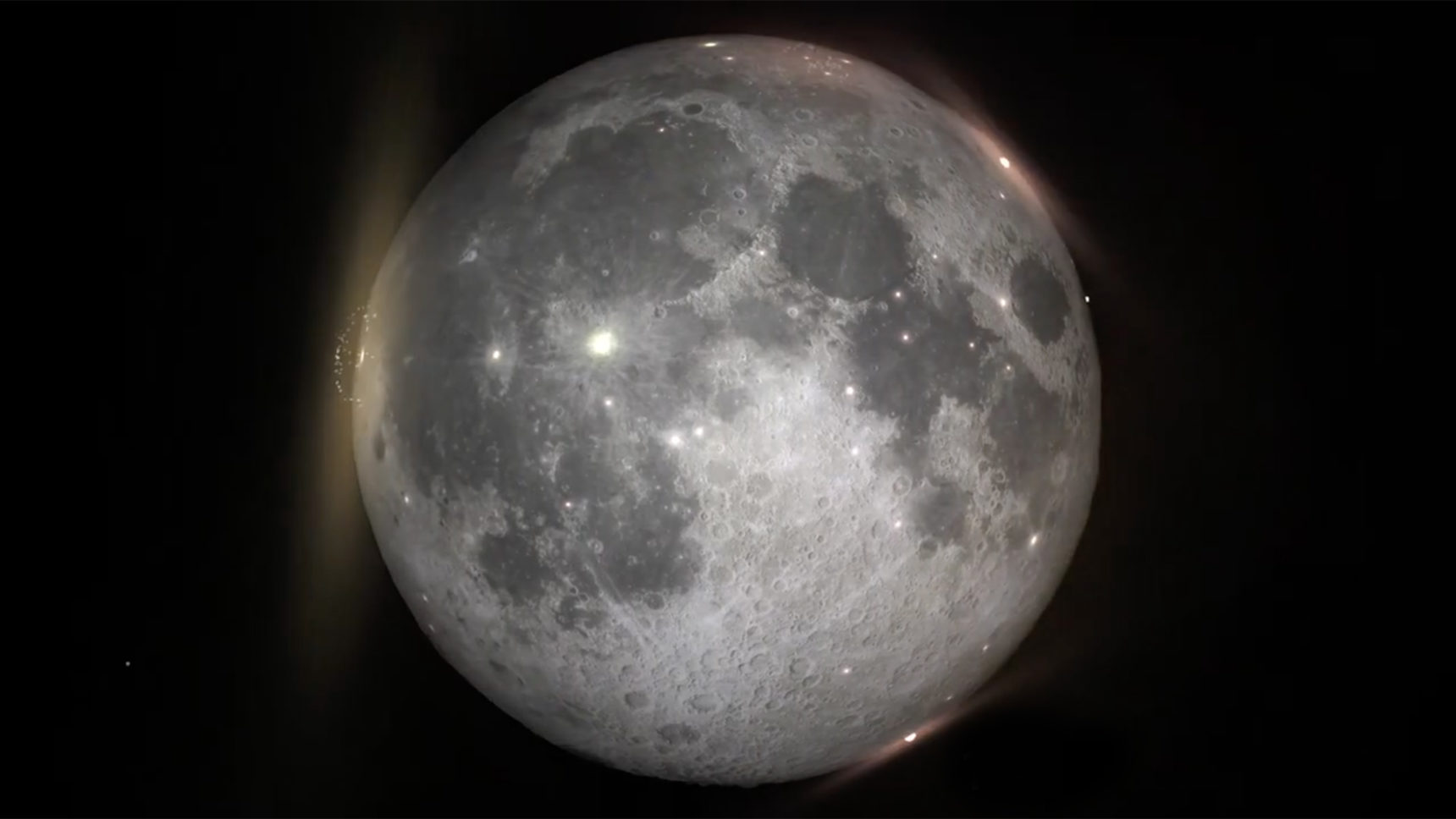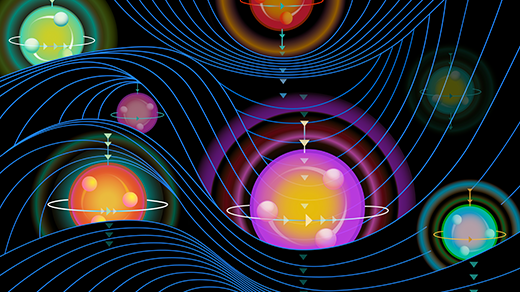Asteroid Rate Jumped in Solar System’s Past

After scientists developed a new method to measure the age of lunar craters, they identified a time when the cratering rate nearly tripled.
NASA/Goddard Space Flight Center Scientific Visualization Studio
Introduction
Some 290 million years ago, as the last trilobites scuttled across the seafloor, the skies above grew just a little more ominous. At that point, large asteroids — including the impactor that would later kill off the dinosaurs — began to rain down on our planet between two and three times more frequently than they did before, according to a study published today in Science.
Researchers spotted the trend while surveying impact craters on both Earth and our closest celestial neighbor, the moon. In these records, many impact craters date back to the past few hundred million years. Older ones are few. “It was surprising,” said Sara Mazrouei of the University of Toronto, the lead author of today’s paper. “We see the footprints of it, but what really happened to cause this?”
If the asteroidal uptick is confirmed, an ancient cataclysm in the solar system’s asteroid belt could be the culprit. Occasionally, asteroids crash into each other, birthing “families” of rocky fragments that continue on similar orbits. Earlier work by Bill Bottke, a planetary scientist at the Southwest Research Institute, has fingered one such asteroid family as the birthplace of the dinosaur-killer and accused another, the Flora family, of causing impacts on Earth perhaps a billion years ago.
Over time, heat from the sun can nudge asteroid families into new positions, said Bottke, who is also a co-author on the new paper. These families can sometimes escape the asteroid belt between Mars and Jupiter and move into the inner solar system, where we reside. Wayward family members might then hit Earth.
Before they can connect all those dots, though, the team needs to keep convincing their peers that the pitter-patter of asteroid impacts really did increase. “There’s definitely a change in the impact rate. Or, at least, I would bet a lot of money on it,” said Joshua Bandfield of the Space Science Institute. The rub, he said, is “how precisely can you tell?”
A Lunar Time Capsule
Scientists already had hints that our planet’s surface has been pounded more than usual over the past few hundred million years. Earth’s history stretches for 4.5 billion years, but most large impact craters appear to have formed relatively recently. Still, geologists typically chalked this up to a bias in the data: Over time, they thought, weathering or tectonic activity just rubbed away the traces of most old craters.
But in 2014, Mazrouei’s graduate-school advisor, Rebecca Ghent, devised a way around that bias. Whereas craters on Earth suffer plate tectonics and weather, lunar scars just sit there, inert, like the boot print of an astronaut. “The moon is a time capsule,” Mazrouei said.
When an impactor slams into the moon, stomping a crater into the surface, it launches boulders into the air. These boulders then litter the area. Over perhaps a billion years, a drizzle of tiny micrometeorites hitting the moon will dissolve the boulders into finer soils called regolith. During that process, the ratio of rocks to regolith in a particular crater tracks the time since the initial impact.
During the day, both boulders and regolith soak up heat. At night, the boulders hold on to this heat, glowing faintly with thermal radiation for hours. The regolith, on the other hand, cools quickly, like beach sand after sunset. The amount of nighttime glow indicates the relative rockiness of a crater and thus, the method assumes, its age.
Mazrouei and her colleagues identified 111 lunar craters with diameters of at least 10 kilometers. They then measured the rockiness around the craters using infrared data from NASA’s Lunar Reconnaissance Orbiter, estimating an age for each. From between about 290 million years ago and now, their statistical analysis showed, big impacts rattled the moon’s surface 2.6 times more often than they had in the preceding 710 million years. That jump occurred around the same time as Earth’s largest mass extinction, known as the “Great Dying,” when about 90 percent of all species went extinct. The causes of that extinction are under debate.
The team also made a census of 38 large craters on Earth so as to have a second, independent set of records. But they knew that it was going to be hard to prove that the fragmentary record of old impacts preserved on Earth’s crust could be trusted. “The assumption has always been ‘oh, that’s erosion,’” said Bottke. “How do you argue against that?”
So the team tried to measure hundreds of millions of years of erosion. Bottke brought in Thomas Gernon, a geologist at the University of Southampton in the U.K. and an expert on kimberlite pipes: carrot-shaped volcanic structures, rich in diamonds, which protrude down into many of the same continental surfaces that also preserve old craters. Conveniently, kimberlites record the erosion they experience, which wears them away from the top down.

Young lunar craters.
Ernie Wright, NASA Goddard
On most old blocks of Earth’s continental crust, erosion has accomplished only a modest scrubbing, wearing down less than a kilometer of rock from kimberlites. That suggests that these surfaces would still show the scars of old, big impacts, the team argued. Ultimately, the data from Earth matched that of the moon: a long lull followed by a jump in crater-causing crashes a few hundred million years ago.
However, the team did find a big discrepancy between Earth and the moon. Prior to 650 million years ago, terrestrial craters nearly vanish. The moon, meanwhile, boasts plenty of impact scars from the same period.
Another recent idea could explain why. At the very end of 2018, a team led by C. Brenhin Keller, a geologist at the University of California, Berkeley, argued that around this same time, the ancient Earth devoured thick portions of its own continents. According to the “snowball Earth” hypothesis, multiple waves of glaciation once encased the entire planet in ice. As these glaciers waxed and waned, they sanded down kilometers’ worth of continental rock, then dumped it into the ocean, erasing huge swaths of the geologic record. This would have also wiped away all but the biggest, deepest craters.
For now, the new impact census still has doubters. “There probably were changes in the impact rate, and they probably were associated with events in the asteroid belt,” said David Minton, a planetary scientist at Purdue University. But he doubts this data proves it. Minton highlighted one possible flaw, a cornerstone of the lunar crater method in the study: Boulders sitting in an old crater probably do not wear down at a constant rate, he said. More likely, the rate at which rocks erode varies over time. Such a fluctuation would throw off the estimates of the crater ages.
Jay Melosh, also at Purdue, added that the small number of moon and Earth craters in the study creates another source of uncertainty. “If we had reliable dates on 10,000 lunar craters, you could make a case out of this,” he said. “But they don’t. Until we have people on the moon bringing back samples every week, we won’t have that kind of record.”
Confirming how impact rates vary in time could have repercussions that echo across the solar system. Scientists use craters — their number, their sizes, how more-recent ones overlap older ones — to estimate the ages of surfaces on planets and moons. “This history of impacts throughout the solar system is pretty central to planetary science,” said Bandfield.
Then there are the biotic implications. If the pattern unearthed by Mazrouei’s study holds, it suggests the past few hundred million years of evolution on our planet occurred in a universe where the danger setting had been dialed up just a little higher. Dinosaurs, flowering plants, early primates and modern-day humans have all lived under an increased risk of extraterrestrial impacts. During that time, Earth has also witnessed three mass extinctions and several smaller ones. Some are suggestively linked to asteroids, like the one that ended the reign of the dinosaurs. Others aren’t.
Could a changing rate of impacts somehow connect to the ebb and flow of life during this period? “It’s certainly tempting to think about,” Bottke said. “Once this paper comes out, I’m interested to see how the astrobiologists react to it.”




